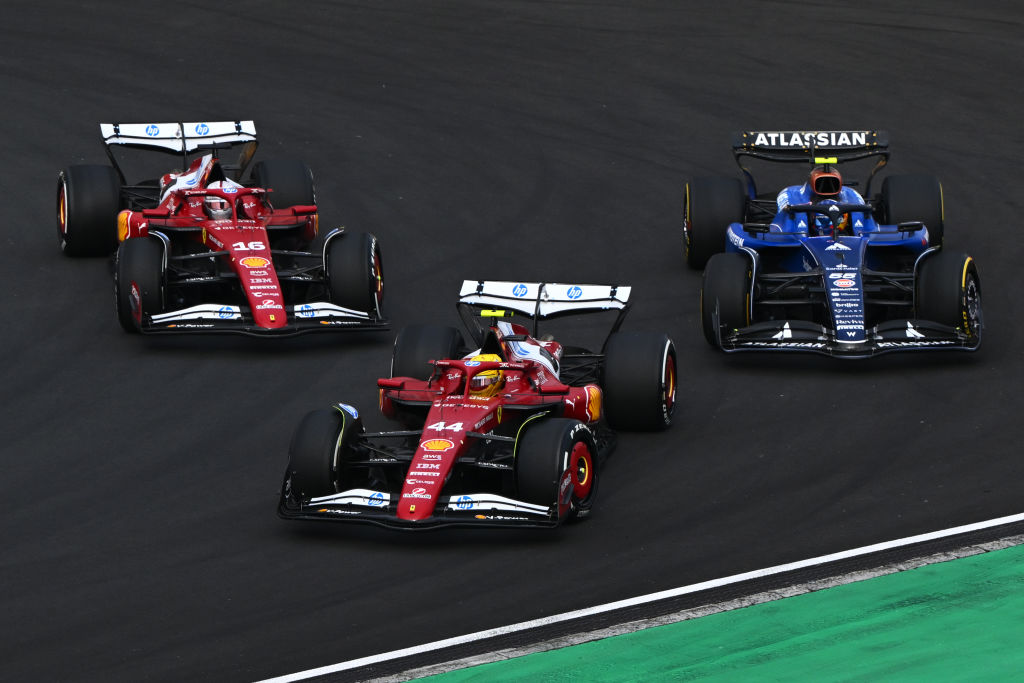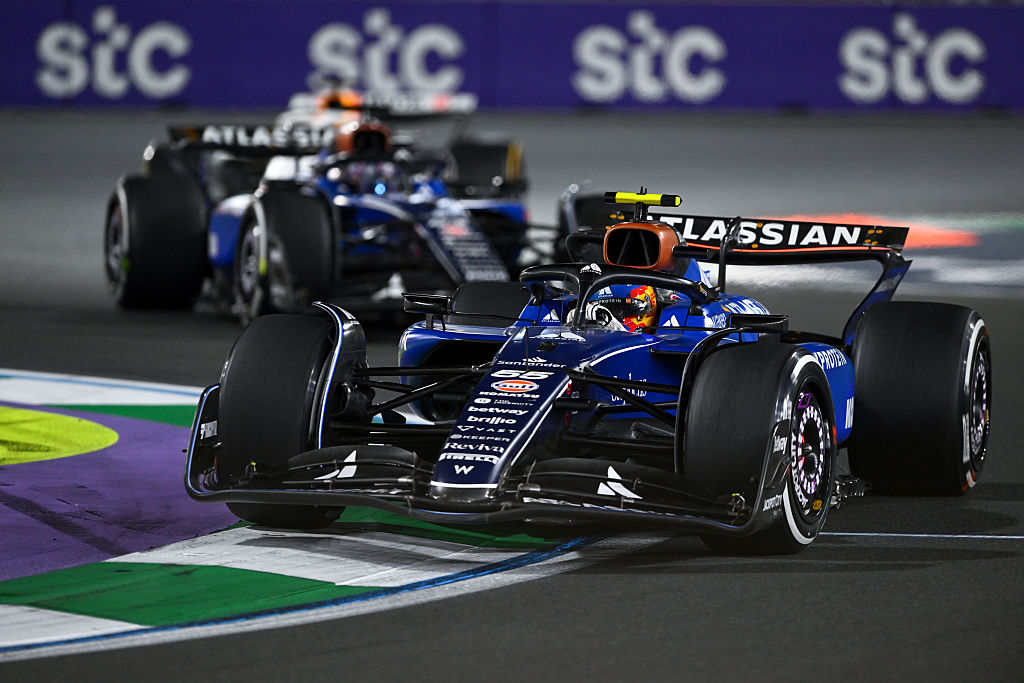The change in Lewis Hamilton’s demeanor has been one of the most painful things to watch so far this season.
Not that you would expect a seven-time world champion to be happy at all with how things have been going on track so far, but Hamilton’s positivity and enthusiasm for the new challenge he faced at Ferrari was infectious in the early months. And that has been rapidly eroded as he has struggled to adapt to his new machinery.
He was particularly down after the Saudi Arabian Grand Prix, having seen reason for optimism in Bahrain a week before but not been able to capitalize on it. Hamilton said he didn’t think there would be any real progress made during the two weeks between races, and that he expected to find the going difficult in Miami and perhaps all year.
Even with a bit of distance between the frustrations of Jeddah and his arrival in Florida, Hamilton was still downbeat.
“Many things [are the problem],” Hamilton said. “Lots of different things. There’s not one particular.
“When I joined Mercedes, the first six months were tough getting attuned to working with new people. Obviously, the engineers I’m working with now are used to setting up a car for a different driver and a different driving style, and I’m used to driving a car with a different driving style. So it’s a combination of a bunch of different things.”
Although Hamilton was more positive about the move as a whole and being part of the team — and his appreciation for how supportive Ferrari has been – he had clearly lost a big part of the spring in his step that there was at the start of the year.
The person he referenced as the different driver the engineers had been working with — Carlos Sainz — however, was actually the one who was particularly enlightening about the difficulties Hamilton is facing, and why he shouldn’t be judged too quickly.

From the vantage point of his Williams, Sainz has a keen appreciation of the challenge facing Hamilton as he tries to adapt to the Ferrari SF-25 and match the performance of teammate Leclerc. Clive Mason/Getty Images
“No, I’m not surprised [he’s found it hard] at all,” Sainz said. “I expected it with myself, and I expected it with him. Because in this sport there’s no secrets. And when you are up against two teammates like we are, like Alex [Albon] and Charles [Leclerc], they know the team inside out and they are already performing at the maximum that that car can perform. So you can only do just a little bit better or the same as them.
“You cannot suddenly arrive and be two or three tenths quicker, because it’s not possible. They are already at the limit of the car. So when you jump to a new team and you’re expected by yourself and by everyone around you to be at that level, you know it’s going to take time. They know a lot more than you that it’s going to take a bit of time.
“The sooner you make that process and the sooner you are at that level the better, but for some drivers it might take longer or shorter. Lewis had an amazing weekend in China, then he seems to have a bit more trouble now. But it’s going to take time.”
Sainz had his own struggles in the opening rounds at Williams, but his performances had clearly improved in the past two races in Bahrain and Saudi Arabia, leading to optimism that he has started to get a better understanding of his new car. The Spaniard warns it’s not that simple, though, and different drivers need different lengths of time to adapt.
“It’s a tricky question [how long is acceptable to need] because it depends how natural the car comes to you,” he said. “It depends how natural the relationship with the engineers and that blend comes. I’ve always said that to know a car well you need at least half a year or a year to experience everything with that car.
“That doesn’t mean that you cannot perform during that year. This is a different topic. You can perform at 100% or at 99% and your 99% might still be pretty good. But the 100% for sure there’s things that you need half a year I would say to experience.
“I’m not using it as an excuse. I want to perform like I did in Jeddah from race one even if I am at 97%. But I just know it takes time and I’m going to be demanding of myself.”


Sainz thinks the current F1 ruleset limits his options in acclimating sufficiently to match a quick teammate like Albon, but there are still some tricks up his sleeve. Rudy Carezzevoli/Getty Images
One of the biggest factors Sainz believes needs taking into account is the current generation of car. The best drivers are often described as those who adapt the quickest to whatever they are driving, but Sainz believes the ground effect era has really closed down the number of avenues drivers can explore in order to get lap time from their machinery.
“This car nowadays, I feel like you need to drive them in a very specific way to be quick,” he said. “I feel like the cars of ’21 you could come in with two or three different driving styles and more or less get to the same lap time, because the car would allow you to get to that limit in different ways.
“I feel the more I get to drive this generation of cars, the more I dig into the data, the more I realize you need to be close to one driving style. And if you don’t drive in that way, you’re never going to be quick.
“It’s just how the car interacts with you which allows you to drive in that specific way. You need to make sure you understand that. It’s a good point. I think these cars are particularly difficult.”
But does that mean Hamilton’s struggles will continue all year, until there are new regulations next season? Not according to his predecessor, who says it is underestimated just how many ways you can adjust an F1 car to try and find characteristics that you like as a driver, referencing the way Ferrari utilizes engine braking far more than Mercedes as one such area Hamilton will be exploring.
“For me this is just one of the 15 things that you have to relearn,” Sainz said. “Some teams like to use engine braking to turn the car. Others just prefer using the differential more. Others prefer to use the brake migration. Others more the setup of the car to naturally put front end with aero. Others with mechanical. Others with pitch. Others with ride…
“You cannot imagine the amount of variability that you can make the car get to a similar lap time in completely different ways.
“For sure that might be one of the 15-20 things that I’m trying to still figure out. Of course, I’m trying high engine braking in the Williams to see if it works. I’m trying low. I’m trying differential maps. I’m trying mechanical balance. I’m trying everything every week just to see what the car likes and what it doesn’t.
“There’re things that suit your style, others that don’t. I think it’s that fight and that process that I enjoy. You’re going to get it wrong many times, but as long as you enjoy it and you just embrace it…
“You know you’re going to get it wrong a few times, but when you click and you get to, ‘This works,’ it’s actually a eureka moment that feels good.”
Who knows when Hamilton might find a eureka moment within his Ferrari, but as Sainz keeps searching for his own, he’s confident there will be a moment in the future when that energy returns for the 40-year-old. Just don’t expect it to necessarily be at the same time for each of them.